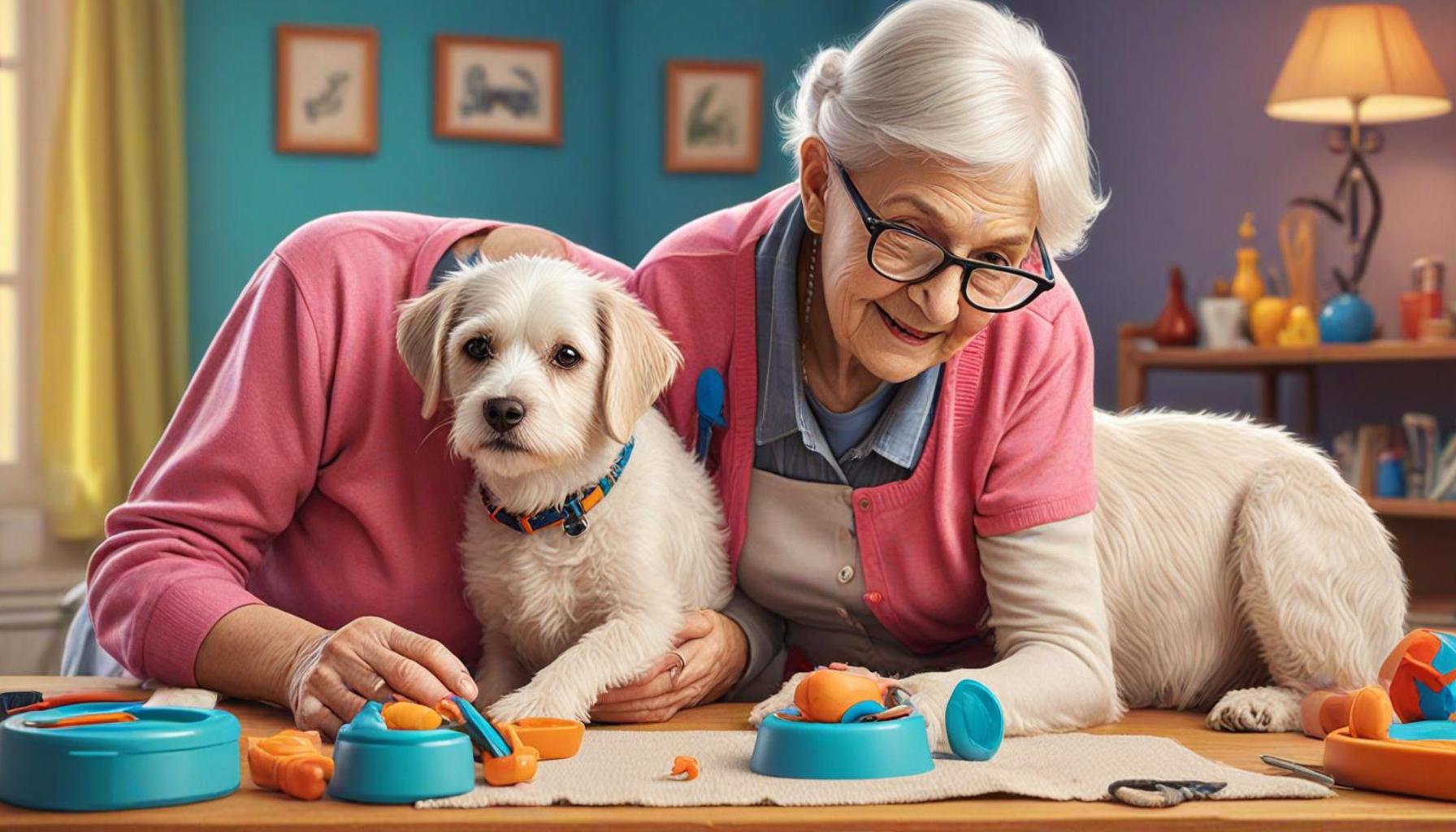Pet Fish Training Methods: Demystifying Aquatic Behavior

Understanding the World of Aquatic Behavior
Fish are often labeled as simple creatures, but their behavior can be surprisingly complex. Training pet fish goes beyond basic feeding; it involves understanding their mental and social needs. In Nigeria, where fishkeeping is gaining popularity, many enthusiasts are eager to enhance their fish’s interactions and ensure their well-being. A growing community of fishkeepers has emerged, fostering a deeper appreciation for the nuanced behaviors of these aquatic animals.
Why Train Pet Fish?
Training can lead to a more fulfilling experience for both the fish and the owner. Here are some compelling reasons:
- Encourages Physical Activity: Trained fish tend to swim more actively, as engaging with them through training sessions invites exploration of their environment. Activities like navigating through hoops or even following a finger can keep them physically fit.
- Promotes Health: Mental stimulation can reduce stress and improve overall vitality. Insects such as Daphnia or prepared foods can be employed as rewards, encouraging fish to participate in training, thus enhancing their cognitive function and promoting a healthier lifestyle.
- Strengthens Bond: Engaging with your fish fosters a deeper connection. Observing your fish react to feeding cues or training exercises can develop trust, making the overall fish-keeping experience richer.
Interestingly, fish are capable of learning and responding to various cues, including visual signals and sound. Species like betta fish or goldfish are particularly notable for their responsiveness to training methods. Bettas, for instance, can learn to jump through hoops for a food reward and can even recognize their owners over time. Goldfish, contrary to popular belief, exhibit long-term memory, which can be leveraged during training sessions. As you delve into this fascinating world, you may discover that your aquatic friend has a personality just waiting to be explored.
What’s Next?
Throughout this article, we will uncover effective pet fish training methods and shed light on the mysteries of aquatic behavior. From using food rewards to creating an enriching environment, the possibilities are intriguing and vast. Techniques such as clicker training can create specific associations between actions and rewards, helping to streamline the learning process. Moreover, crafting an environment filled with plants, ornaments, and hiding spots provides not just a comfortable habitat but a stimulating arena for your fish to engage and interact.
As a Nigerian fish enthusiast, you might also explore localized breeders and pet shops that offer unique African fish species, enhancing your ability to train fish that thrive in warmer waters. It’s a journey of discovery that can enrich both your life and that of your aquatic pets. Get ready to immerse yourself in the wonderful world of aquatic behavior, where every bubble, flash, and flick of the tail tells a story waiting to be unraveled.
ADDITIONAL INSIGHTS: Expand your understanding here
Exploring Effective Training Techniques
As we venture into the realm of pet fish training methods, it’s essential to recognize that different species will respond uniquely to various training techniques. Understanding these nuances can greatly enhance your training experience and the relationship with your fish. Whether you’re a seasoned aquarist or a novice enthusiast, employing the right methods can open up a world of interaction that you may have never thought possible.
Food Reward-Based Training
One of the most effective training methods for pet fish is the use of food rewards. This approach capitalizes on the natural instincts of fish, motivating them to perform specific actions in exchange for their favorite treats. Here are some effective tips for implementing this method:
- Consistency is Key: Be consistent with the timing of your rewards. Start with simple commands and reinforce them with food every time your fish successfully completes the action.
- Selective Feeding: Use special treats like live brine shrimp or nigiri pellets to reinforce positive behavior. Fish are more likely to respond eagerly when they know a delicious snack is involved.
- Short Sessions: Keep training sessions short but frequent. Fish have relatively short attention spans, so aim for sessions lasting around 5-10 minutes. This prevents stress and keeps your fish engaged.
Clicker Training for Precision
Another fascinating method is clicker training. This technique involves using a small handheld device that makes a distinct clicking sound, used to mark desired behaviors. Once your fish associates the sound with a reward, you can effectively guide them through complex actions.
Here’s how to get started with clicker training:
- Introducing the Clicker: Begin by clicking the device and immediately providing a food reward. Repeat this a few times until your fish starts recognizing the sound as a precursor to food.
- Connecting the Click to Behavior: Once the fish associates the sound with a reward, introduce simple commands like swimming through a hoop or approaching your hand. Click when they follow the command, and reward them promptly.
- Gradual Advancement: As your fish picks up on the concept, you can gradually increase the complexity of commands, shaping their behavior over time and rewarding them at each interval.
In exploring pet fish training methods, one comes to appreciate the dynamic interplay of behavior and response. Training isn’t solely about obedience; it enriches their environment and fosters a deeper connection between the fish and their owner. With patience and persistence, the tropical waters of your aquarium can evolve into a vibrant playground for your fish, where every swim is a new lesson in learning and growth.
| Training Method | Advantages |
|---|---|
| Positive Reinforcement | Encourages desired behaviors with treats, enhancing bonding. |
| Target Training | Effective for teaching tricks, like jumping or swimming through hoops. |
| Shape Training | Gradually molds behavior, allowing for complex behaviors to be learned. |
| Environmental Enrichment | Stimulates the fish’s natural instincts, leading to healthier and happier aquatic pets. |
As we delve into the realm of pet fish training methods, understanding these techniques can significantly enrich the quality of life for both the fish and its owner. By implementing behaviors such as positive reinforcement, fish owners can discover a unique way to communicate and bond with their aquatic pets, fostering a harmonious environment.A well-structured training regimen not only aids in cognitive enhancement but also nurtures social interaction skills in fish. Training modalities such as target training and shape training showcase the intelligence of these exquisite beings, transforming them from simple aquatic observers to interactive companions. Moreover, enriching their habitat with stimulating elements not only keeps boredom at bay but also promotes mental well-being.Every technique offers a glimpse into the astonishing complexities of underwater life, urging enthusiasts to engage actively and explore further the diverse world of aquarium training. For those intrigued by aquatic behavior, experiments can lead to remarkably rewarding encounters.
ADDITIONAL INSIGHTS: Expand your understanding here
Advanced Training Concepts for Engaged Fish
To deepen your bond with your pet fish, it’s crucial to explore more advanced training techniques beyond the basic methods. Let’s delve into some novel approaches that can bring not just entertainment but also mental stimulation, ensuring that your aquatic friends lead enriched lives.
Obstacle Courses for Physical Engagement
Think of creating an obstacle course in your aquarium as a fun way to challenge your fish physically and mentally. Construct barriers and tunnels using aquarium-safe materials, and watch your fish navigate these obstacles. This not only encourages physical activity but also stimulates their problem-solving abilities.
- Designing the Course: Start simple with a few obstacles, like plastic plants and floating rings. As your fish get accustomed to these challenges, you can increase the complexity by introducing more structures.
- Rewarding Completion: Use food rewards to reinforce the successful completion of the course. As they familiarize themselves with the layout, your fish will gain confidence and may showcase impressive agility.
- Monitoring Progress: Take notes of their behavior as they navigate the courses. This will inform you about their preferences and strengths, allowing you to tailor their training for optimal engagement.
Social Training with Tank Mates
Another intriguing facet of pet fish training involves social interactions among tank mates. Certain species exhibit unique behavioral patterns when raised in groups, and training can harness these dynamics. Consider these aspects when fostering social skills within your aquarium:
- Identifying Social Species: Tropical fish like guppies and tetras are highly social and can be trained to work together. By enriching their environment, you can evoke natural behaviors that strengthen relationships within the group.
- Incorporating Team Tasks: Introduce cooperative tasks where groups need to work together. This could include chasing a particular object you introduce into the tank or learning to approach a feeding station at the same time.
- Monitoring Social Hierarchies: Be mindful of the social hierarchy within the tank. Ensure that all fish get equal opportunities for recognition and rewards to foster a harmonious environment.
Integrating Technology in Training
The future of pet fish training may very well parallel advancements in technology. Utilizing tools such as aquarium cameras can offer data-driven insights that enhance training efforts:
- Behavior Tracking: Install a camera that records your fish’s behavior during training sessions. Reviewing the footage can reveal patterns in their actions, allowing you to adjust your training techniques for better results.
- Interactive Feeding Devices: Invest in electronic feeding devices that deliver food based on specific triggers, further engaging your fish during training. This method also helps maintain their routine and encourages them to learn through repetition.
- Online Communities: Join forums or groups dedicated to fish training on social media. Engage with fellow aquarists to exchange tips, share experiences, and stay updated on the latest innovations in fish training.
Enhancing your pet fish’s life through these innovative training methods can lead to more profound connections and breathtaking displays of behavior. As you embark on this journey of discovery, remember that each fish’s personality and preferences will dictate the success of your ventures. The world of aquatic behavior is rich with potential, waiting to be explored at the tip of your fin-friendly tools.
YOU MAY ALSO LIKE: Read read another article
Conclusion: Elevating the Bond with Your Aquatic Companions
In the captivating world of pet fish, training methods offer not just a means of entertainment but a unique opportunity to dive deeper into understanding their aquatic behavior. As we’ve explored, simple techniques like positive reinforcement can evolve into advanced training practices that include obstacle courses and social tasks. These methods not only foster physical agility and cognitive stimulation but also create a more engaging environment for your fish, enhancing their overall well-being.
Moreover, leveraging technology through tools such as aquarium cameras and interactive feeders opens new avenues for practical application. By meticulously observing your fish’s responses, you can adapt your training techniques, making the experience more enjoyable for both trainer and trainee. Online communities are also invaluable, serving as platforms for sharing insights and discovering trends that can enrich your fish-keeping journey.
Ultimately, the journey of pet fish training is as unique as the individuals you keep in your aquarium. By embracing these methods and paying attention to the preferences and personality of your fish, you not only enrich their lives but also cultivate a profound bond that transcends the glass of the tank. In this manner, your aquatic companions become not just pets, but vibrant participants in a fascinating, interconnected ecosystem, beckoning you to explore and learn continuously.


